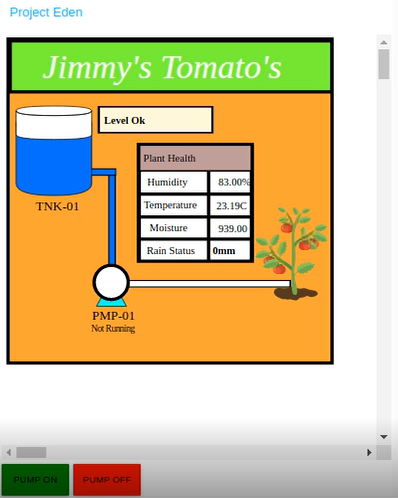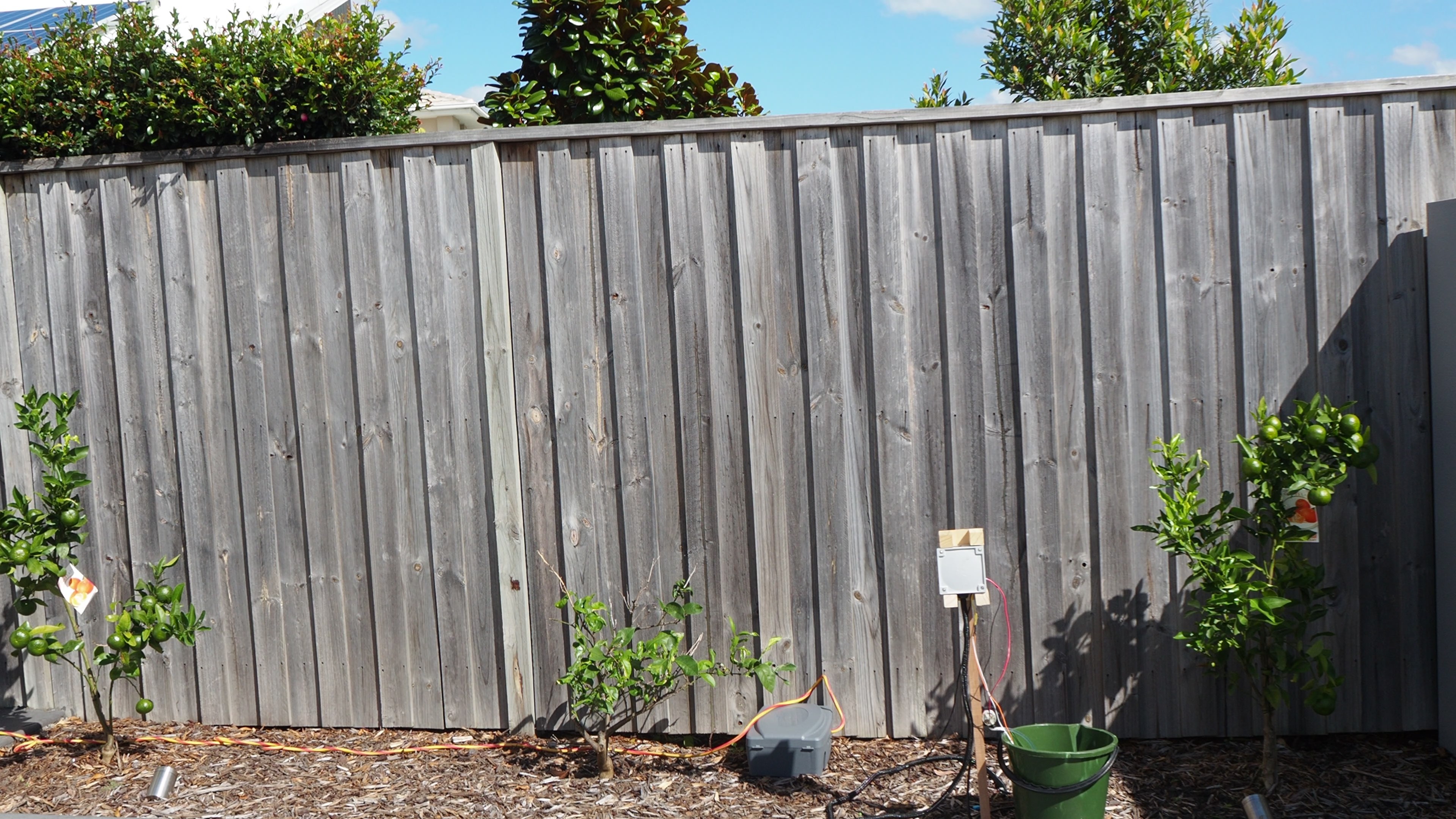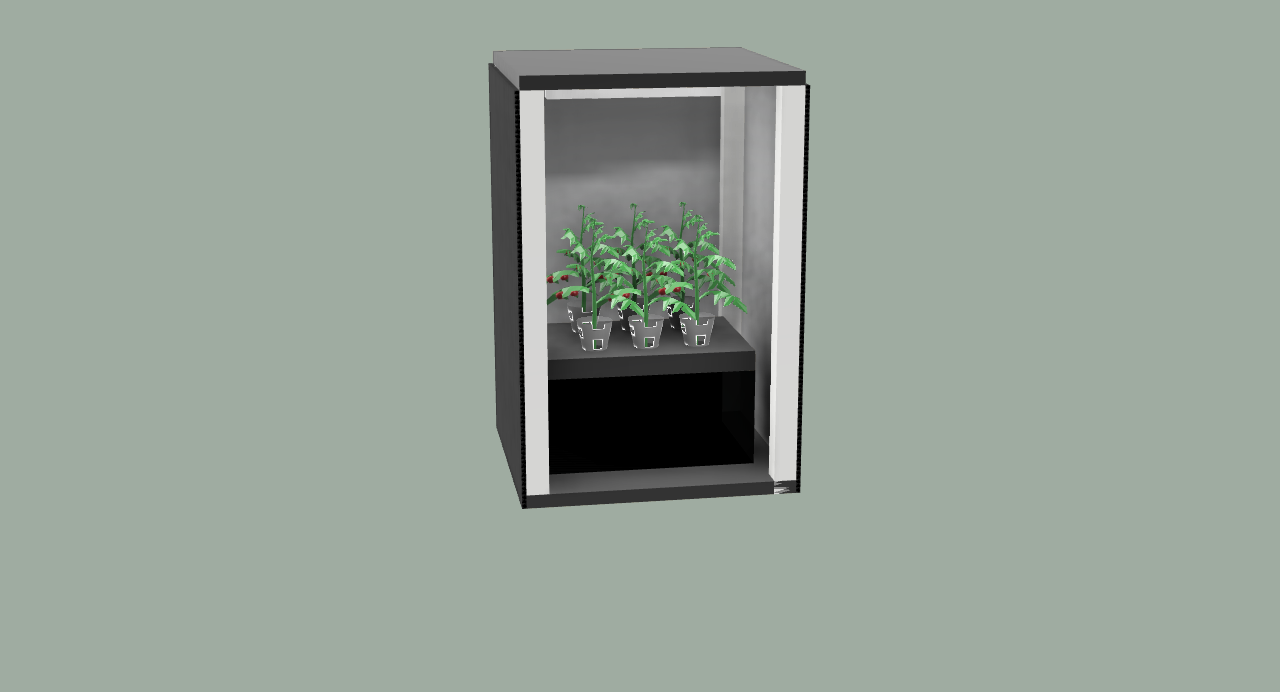Background
Earlier this year, we designed and built a robust, IoT self-watering plant system (Project Eden) that I installed in my home garden. Having a background in water process engineering, I aspired to develop a solution aimed at water conservation that was cheaper to implement than the average irrigation system. The system also gave the user full visibility over the tank water level, temperature, humidity, soil moisture and the ability to control the pump. This project was published as part of a collective engineering-based content platform run by two engineers.
Since delivering the first edition (1st Ed), we have been designing a scaled-up version of the smart watering system into IoT hydroponics. The main components used in the 1st Ed are essentially the same, however, we are evolving into an advanced deep water culture (DWC) hydroponics apparatus. DWC hydroponics is effectively a method of growing plants using an aerated water reservoir, in which the roots of the plant are submerged in a water and nutrient solution.
The advantages of this advanced DWC hydroponics are:
- Accelerated growth due to efficient absorbance of nutrients and oxygen
- Negates the need for a lot of fertilisers (more environmentally friendly)
- Little maintenance required, minimal moving parts and simple assembly
- Live monitoring and control, as well as automation
Using the principles described above, climate-friendly & resilient tomatoes will be grown.
Challenges Addressed
There is no denying that the global climate crisis has a significant impact on water scarcity, with water shortages and droughts being more prevalent in areas of the world due to extreme weather events. Hydroponic gardening is extremely climate friendly in that it requires far less footprint than typical gardening, uses up to 80-90% less water, produces higher yields, does not require soil or many fertilisers, and crops can be grown at any time of the year, as well as any location, reducing carbon emissions from transportation. In terms of climate resiliency, this project aims to address the following challenges.
1. Water Consumption
Water is an extremely vital resource and with time, ways to preserve water and use it more sustainably need to be explored. 23-40% of household water is accounted for from outdoor use, with the highest water usage being associated with lawns, most vegetables and fruit trees. A lot of water is wasted in handheld watering due to
- Water reaching the wrong spot of the plant
- Oversupplying the plant with water
- Watering at the wrong time of day
- Poor management of soil
Of course, there are efficient sprinkler and irrigation systems (which the 1st Ed of this achieved), however, they're only known to use 30 to 70% less water than conventional sprinklers and watering systems. Furthermore, sprinklers cannot be used in windy climates. Drip irrigation systems are also prone to plastic degradation from the sun, which can affect soil and fertilisers, as well as requires precise installation. Irrigation systems also risk water losses through seepage and percolation in surface irrigation and evaporation in sprinkler irrigation (dependent on discharge, temperature and humidity).
As such, the IoT hydroponics project will address the issue of poor water conservation as there are extremely minimal water losses in DWC hydroponics.
2. Fertiliser Use and Soil
It's known that fertilisers are the main nutrient (nitrogen, phosphorus and potassium) source for plants. In conventional farming, nitrates are easily leached from the soil and phosphorus can also be lost from the soil by erosion and high rainfall. Leaching through soil leads to health hazards (especially if groundwater is supplying utilities) and contributes to an acidic environment. Unfortunately, acidic soils may cause nutrient uptake to become unavailable, leading to nutrient deficiencies in plants and therefore causing sickness and even death.
Eutrophication and harmful algal blooms (HABs) are also the results of excessive runoff of nutrients. HABs have a direct impact on the ecosystem and can lead to an adverse effect on food web biodiversity. HABs create dead zones in water, which kill animals through harmful toxins, as well as hypoxia causing fish to suffocate due to reduced oxygen concentration from HABs. Warming temperatures in the water prevent water from mixing, which therefore will allow algae to grow thicker and faster, promoting an increase in HABs with climate change.
Hydroponics uses no soil at all, which eliminates the risk of soil acidity in the environment. Moreover, it requires far less fertiliser than conventional gardening/farming where runoff into the environment and leaching into soils is neglected completely.
The Project, Solutions and its Uniqueness
As discussed, "Project Eden" will address the issues surrounding climate resilience by:
- Conserving water that hand-held watering and irrigation systems do not achieve as efficiently and
- Negating the potential leaching and runoff of fertilisers that lead to acid soils and algal blooms
How it will achieve this:
The plants will sit in net pots, filled with hydroton (clay growing medium), which sits on the top of an opaque storage tub (aka. the water reservoir). The table below stipulates the critical components and how they will be used
| Component | Function | Proof of Concept? |
| Peristaltic Pump | Dose the required nutrients into the water reservoir | Used in 1st Ed of the project to dose water through drip irrigation (see photos) |
| Aquatic Pump | Provide aeration to the system to allow sufficient oxygen uptake | Demonstrated on our YouTube channel when we grew hydroponic basil and strawberries |
| Energy Efficient LED light | Promote photosynthesis and supplement the growth of the plant. The LED will be controlled using a timer through the GPO connection to run for 16 hours a day, to give the plants 8 hours of rest. | Demonstrated on our YouTube channel when we grew hydroponic basil and strawberries |
| Plastic Opaque Storage Tub | Water reservoir in which the water, nutrients and plant roots will be. | Demonstrated on our YouTube channel when we grew hydroponic basil and strawberries |
| Net Pots | Basket for the hydroton and plants | Demonstrated on our YouTube channel when we grew hydroponic basil and strawberries |
| Float Switch | Sits level with the bottom of the net pot, to ensure water does not fall below the required level | Used in 1st Ed of the project to dose water through drip irrigation (see photos) |
| DHT11 Humidity and Temperature Sensor | Monitor humidity and temperature of the hydroponics plant | Used in 1st Ed of the project to dose water through drip irrigation (see photos) |
| pH probe | Monitors the pH of the plant | |
| Arduino Microcontroller (+ ESP8266) | Provides logic and control to all of the electrical components and allows the interface to monitor systems | Used in 1st Ed of the project to dose water through drip irrigation (see photos) |
| Raspberry PI 4 | Used as a server to allow the 24/7 running of the node-red software and mosquito MQTT server to allow continuous feedback, monitoring and control | Used in 1st Ed of the project to dose water through drip irrigation (see photos) |
The below sketch shows how the components in the table are connected

So how is this project unique and different? Well, starting with the disadvantages of general hydroponics systems and how this system is unique using its IoT capabilities:
| Regular Hydroponics Disadvantage | Our Unique Solution |
| If aeration fails, the user needs to 1. Be aware that it has failed 2. Correct the system in a timely manner or else plants are at risk of death | As the system has IoT monitoring through the node-red server, a prompt will be sent to the user if aeration has failed. This allows us to investigate the issue straight away and treat the cause in a timely manner |
| Requires a lot of maintenance and is time-consuming | With a monitoring and control system set up in node-red, we can visualise the entire process from anywhere in the world. We can remotely monitor water level, pH, humidity and temperature, meaning we do not need to physically check the system as much. The control interface we have developed also allows us to control pumps and all other output components and as a result, nutrients do not need to manually be dosed. The end result is that less physical time is required to operate and maintain the project, as it can mostly be done remotely. |
A core foundation for the Climate Resilient Community challenge was the ability to demonstrate data collection through a project. We believe that our IoT hydroponics design, in conjunction with its ability to collect and store data, as well as monitor and control a physical process through an established server generates a unique solution to water scarcity and the environmental concerns surrounding present-day techniques of gardening and farming. Climate change is exacerbating these issues and therefore, we believe this solution addresses the issues that we've discussed. The image below depicts the existing interface used for control as designed and programmed in node-red. Node-red is a programming tool that can link with online services, including MQTT servers and graphical interfaces. We were able to therefore use node-red to create our own custom GUI that gives the use 24/7 visual monitoring and control

All materials and components used for the projects are extremely accessible, with the only ancillaries required being water and electricity. A high-level estimate expects that this project should not exceed $150 in capital costs, which should generate a positive return on investment when considering the minimal energy costs, water costs and increased yield of tomatoes that is expected with this method of hydroponic growing.
Project Timeline
With this project having completed its first pass "proof of concept" earlier in the year, a working prototype in time for the final round is more than realistic. With the electronics, coding, interfacing and physical housing for the hydroponics already complete, the main design steps now are to combine all of these components together so it is achieving what is expected as per our scope.
The timeline and design documentation are:
- May 2022: Commissioned the 1st Ed of Project Eden, which is used as a proof of concept for the data monitoring, collection and control of the components
![]()
Project Eden 1st Ed Irrigation Layout - August 2022: Developed a 3D model and schematics for the 2nd Ed of Project Eden as required by the Hackaday 2022 criteria
- September 2022: Procure all additional items that are not currently in the inventory, ensuring the project budget is not significantly blown out
![]()
3D Model of IoT Hydroponics - October 2022: Build the IoT Hydroponics project as per the design scope, noting down any potential gaps between the design and build phase in the project spreadsheet and also the Hackaday logs. Also, amend the code for the 2nd Ed
- Mid-Late October 2022: Commission, test and evaluate the working prototype
- November 2nd, 2022: Submit the project and its associated video as per the Hackaday 2022 "Final Round" criteria.
Between now and commencing the project build, the following 2 opportunities will be explored:
- Self-watering capabilities of the water re3servoir: The feasibility to attach a solenoid and check valve into the house potable water system will be explored, assessing if automatic filling should be implemented when the level of water falls below the level switch.
- Advantage: Even less maintenance and physical operation required
- Disadvantage: Complex routing of hosing system and potentially burst hoses from constant pressure, which goes against the notion of water saving - risk will be assessed
- Integrated cooling system: There is a risk that the aquatic pump will generate heat in the water, which is not ideal for the plants. As such, a cooling system will be explored that communicates with the humidity and temperature sensor
- Advantage: Precise control over temperature
- Disadvantage: Unnecessary energy consumption and potentially overkill as effects aren't expected to be detrimental
- 3D printed net pots: Creating the net points using 3D printed PLA only so it is a complete custom design
- Advantage: Better for the environment as PLA is completely biodegradable, with 80% fewer carbon emissions than traditional plastics
- Disadvantage: Time-consuming and strength/integrity is not guaranteed.
 Uncle Toby and Aquaman
Uncle Toby and Aquaman
